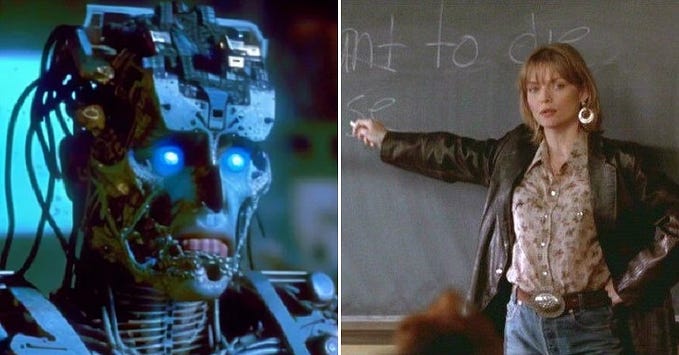Positive adaptation and the wow factor in experience design
How quickly do we get accustomed to good things? How does it impact the way we perceive services and products that surround us? You are experiencing positive adaptation all the time even if you don’t know that.

Wow factor
There seems to be a slight obsession with the wow factor at the silver bullet for delivering Customer Experience. What is this elusive wow? The various definitions say that it is a state of delight and amazement after being surprised by something truly wonderful. You can find thousands of CX related articles on Google telling how to achieve such an effect. They recommend to anticipate user needs, personalize services, do the unexpected and add extra and then some more. All these would be a pretty good advice if not for one tricky thing — the positive adaptation effect.
Positive adaptation
Imagine yourself going to a doctor. Instead of waiting in line seated on an uncomfortable chair, you have the door open by a butler with your favorite beverage in hand. You are asked to get to the doctor’s office right away, where she is awaiting you with a big smile, cookies and a free ticket to a fancy SPA. She already knows that you came with a flu from your FB update and has the plan for the treatment ready. Wouldn’t you be delighted? What would happen though if you visited her the next time? You would naturally expect to have things happen the same way. Perhaps you would even expect another little delight added on the top like a cherry. Anything else would be a disappointment.
Our brain is an amazingly complex organ composed out of over 100 billion neurons all organized into systems designed to sense, process, store, perceive, and act on information we receive from our environment. All experiences we go through are filtered by our senses and then delivered to the brain for interpretation. Any experience thus creates a template through which new input is filtered. In other words, we become sensitive to similar future experiences. This sensitized response stems from a pattern our brains form based on a similar neural activation or experience. So, if we visit the doctor for the first time, our brains are delighted as they have not had a pattern ready for such an event. But the second time we arrive for an appointment, the pattern has already been formed so we have a sort of a baseline ready to compare this new visit to. Then the experience equation comes into play as we start comparing our expectations with that is happening.
The phenomenon of positive adaptation is typically discussed in the context of trauma and building resilience (on other words, bouncing back from a difficult situation) but its principles are equally applicable in the context of companies trying to delight us with wow factors. This is how it works.
When we experience a positive change for the first time, it is typically linked with positive events happening. You are delighted to take the first sip of your favorite coffee, amazed by the preparedness of your doctor and treated like a truly special patient. But over time, these elements become the new normal and therefore you experience fewer positive events as you get used to all the new elements construing your doctor’s visit. So after a while you just don’t notice them anymore. And in consequence, with fewer positive events and thus fewer positive emotions, your newfound customer experience can’t be sustained. Daniel Kahneman calls this phenomenon a “satisfaction treadmill.” Because we continuously shift our standards upward once we reached them, we’ve got to keep on getting more to feel satisfied again.
Managing positive adaptation
Is there a way to avoid the positive adaptation in customers? Naturally, companies might attempt to keep on increasing the delight level but adding more and more wow elements. But as you can easily imagine, this is not the soundest approach economically.
An alternative way is to keep on shifting the adaptation level. It can be achieved by alternating the “normal” level of the service with the “delightful” level. Each time you come to your doctor you are either treated in a regular way: with the line and the uncomfortable chairs or in a “wowing” way with butler, coffee and cookies. As much as it sounds reasonable from the psychological perspective, I am not convinced that many companies would dare to apply such an approach to their service.
Any other suggestions? — you might ask. Actually, there are. But they are not at all about adding hedonistic, wow-inflicting elements to your service. They are about being humane towards your customers. Treating them like friends not petitioners. Or thieves. Or liars. Here they are:
1. Give customers permission to be human: accept their emotions, even fear, anger or anxiety. If you keep on rejecting them in order to protect yourself you only lead to increase of their frustration.
2. Simplify: do less, not more. Focus your offering on what you are best at. Don’t overwhelm people with hundreds of promotions and added value services. In our over-complicated world people strive for easier choices. Not more difficult ones.
3. Offer meaning: create goals your customers want to achieve. Help them feel like contributors. People want to help the world in some way. Or at least to be associated with organizations that do good.
4. Be grateful that your customers are with you. Appreciate their loyalty. See them as good friends not like milking cows. Contact them not only when you want something.
5. Increase the effort you put into your relationships with customers. Remember about their needs. Be forgiving. Don’t waste their time in a wrongly understood notion of engagement, when you keep on demanding their attention with little reward.
Measuring with positive adaptation in mind
Many companies forget to take into account the positive adaptation effect in their CX related measurements so they expect the measure to keep on growing over time. Yet, if you think about it for a moment, it seems rather unrealistic. Without adding ever new wow factors, the measure is likely to be at best stable. Furthermore, companies often overlook that the competition doesn’t sleep and is also creating new wow factors, raising the overall expectation level on the market. All of this makes generic measures such the Net Promoter Score and others (CSI, CX Index, etc.) inadequate in capturing the true state of how your customers see you over time.
The measure that takes positive adaptation into account needs to be flexible and adaptable. It needs to help companies to focus on building and improving those elements of their services that keep this phenomenon at bay. But in order to do so, a company needs to understand in the first place what is the vision of experience they would like to deliver. Without such a vision, they will keep on chasing after the wow factors and need to keep on finding forever new ways to build short-lived delights for their clients.
__________________________________________________________________
Aga Szóstek, PhD is an experience designer with over 19 years of practice in both academic and business world. She is an author of “The Umami Strategy: stand out by mixing business with experience design”, a creator of tools supporting designers in the ideation process: Seed Cards and the co-host in the Catching The Next Wave podcast.









